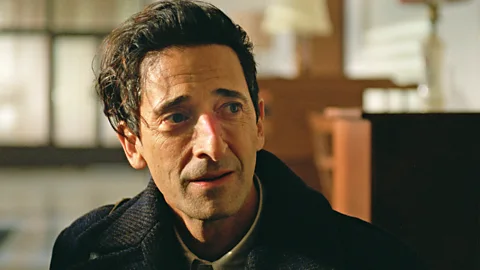

"The Brutalist" has sparked lively debate among historians and cinephiles alike, as it dramatizes the journey of Jewish immigrants who reshaped post-WW2 America. But how true is its portrayal? This review delves into the real-life history behind the narrative, examining the accuracy of its depiction of a generation marked by profound struggle, relentless resilience, and inspiring triumph.
In the aftermath of World War II, countless Jewish survivors and immigrants arrived in America seeking refuge and a fresh start. They came with heavy baggage—memories of loss, displacement, and the lingering scars of persecution—but also with a determination to rebuild their lives in a new land. Their experiences ranged from facing discrimination and economic hardships to forging vibrant communities that would ultimately influence American culture, politics, and business.
Historians note that the real-life journey of these immigrants was far from a smooth ascent. Many grappled with the dual challenge of preserving their cultural identity while assimilating into an unfamiliar society. Neighborhoods once defined by tradition gradually merged into the broader urban fabric, and institutions emerged that celebrated both heritage and innovation. The narrative in "The Brutalist" touches on these themes, yet some critics argue that the film tends to oversimplify the nuanced, often painful process of integration.
While "The Brutalist" captures the raw emotional landscape of its subjects—highlighting the courage and tenacity needed to overcome adversity—it sometimes embellishes aspects of their experience for dramatic effect. For instance, the film’s portrayal of internal community conflicts and the sometimes-overlooked bureaucratic challenges faced by immigrants might not fully encompass the layered reality documented by scholars and eyewitnesses. Real-life accounts reveal a mosaic of experiences, where moments of despair were interwoven with remarkable achievements in education, entrepreneurship, and cultural enrichment.
Moreover, the film’s stylistic choices—employing stark, Brutalist imagery—mirror the architectural legacy that many immigrant communities helped shape. This aesthetic serves as a powerful metaphor for the enduring, often austere beauty of survival against all odds. Yet, for some viewers, the cinematic lens may obscure the day-to-day resilience and everyday heroism that defined the immigrant experience.
In conclusion, while "The Brutalist" succeeds in drawing attention to an important chapter of American history, its narrative should be viewed as one interpretation among many. The true story of Jewish immigrants in post-WW2 America is complex and multifaceted—a story of hardship, hope, and relentless determination that continues to inspire. As we assess the film’s historical fidelity, it becomes clear that the real legacy of these immigrants is not only written in dramatic arcs but also in the quiet, persistent efforts that built communities and transformed a nation.
Swipe. Select. Stay informed.


Acclaimed actor John Lithgow is rumored to be in the running for the role of Albus Dumbledore in the upcoming Harry Potter TV series, sparking excitement among fans and industry insiders alike.
In a celebration of cultural legacy, iconic film star Audrey Hepburn and glam rock pioneer Marc Bolan are set to be commemorated with blue plaques. These markers will honor their enduring contributions to film, music, and popular culture.
In a daring reinterpretation of Chekhov's classic, Cate Blanchett and Emma Corrin deliver spellbinding performances in a groundbreaking London production of The Seagull. Their dynamic portrayal fuses traditional themes with a modern sensibility, captivating audiences and critics alike.
In a candid special segment of The Short Report, pop star Sabrina Carpenter addresses swirling rumors linking her to cult activities. The singer sets the record straight, dispelling the wild allegations and reaffirming her commitment to her music and fans.
